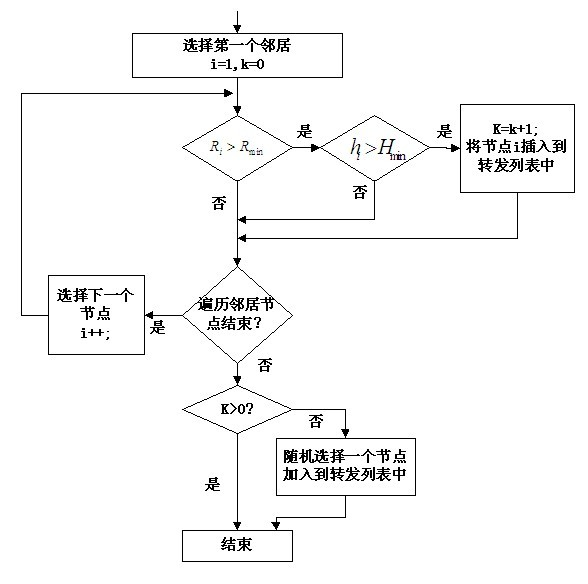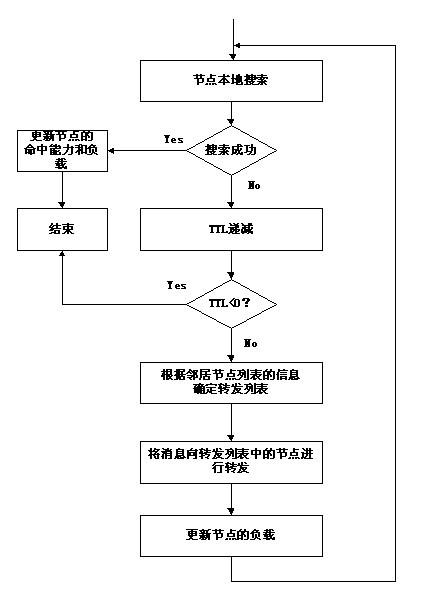Balanced quick searching method in structureless P2P (Peer-to-Peer) network
A P2P network and search method technology, applied in the field of balanced and fast search, can solve the problems of short average search path, difference in message processing efficiency, stranded queuing, etc., to improve the search hit rate, reduce search delay, and save network overhead.
- Summary
- Abstract
- Description
- Claims
- Application Information
AI Technical Summary
Problems solved by technology
Method used
Image
Examples
Embodiment Construction
[0044] A balanced fast search method in an unstructured P2P network, comprising:
[0045] (1) Calculation of node hit ability: each node can calculate its hit ability according to its historical hit records.
[0046] (2) Calculation of node residual load: each node can calculate node residual load according to its own capacity and current load status.
[0047] (3) Cache table: each node maintains a cache table, and the cache table stores the information of hit nodes that are queried from this node, including node ID and shared file information.
[0048] (4) Neighbor table: Each node maintains a neighbor table, which stores the information of neighbor nodes, hit ability and remaining load.
[0049] (5) Forwarding strategy: The forwarding strategy adopted is based on random walk forwarding, but the difference is that the number K of random walks of nodes changes dynamically when forwarding at each hop, and the value of K is related to the hits of neighbor nodes. Capacity is re...
PUM
 Login to View More
Login to View More Abstract
Description
Claims
Application Information
 Login to View More
Login to View More - R&D
- Intellectual Property
- Life Sciences
- Materials
- Tech Scout
- Unparalleled Data Quality
- Higher Quality Content
- 60% Fewer Hallucinations
Browse by: Latest US Patents, China's latest patents, Technical Efficacy Thesaurus, Application Domain, Technology Topic, Popular Technical Reports.
© 2025 PatSnap. All rights reserved.Legal|Privacy policy|Modern Slavery Act Transparency Statement|Sitemap|About US| Contact US: help@patsnap.com



